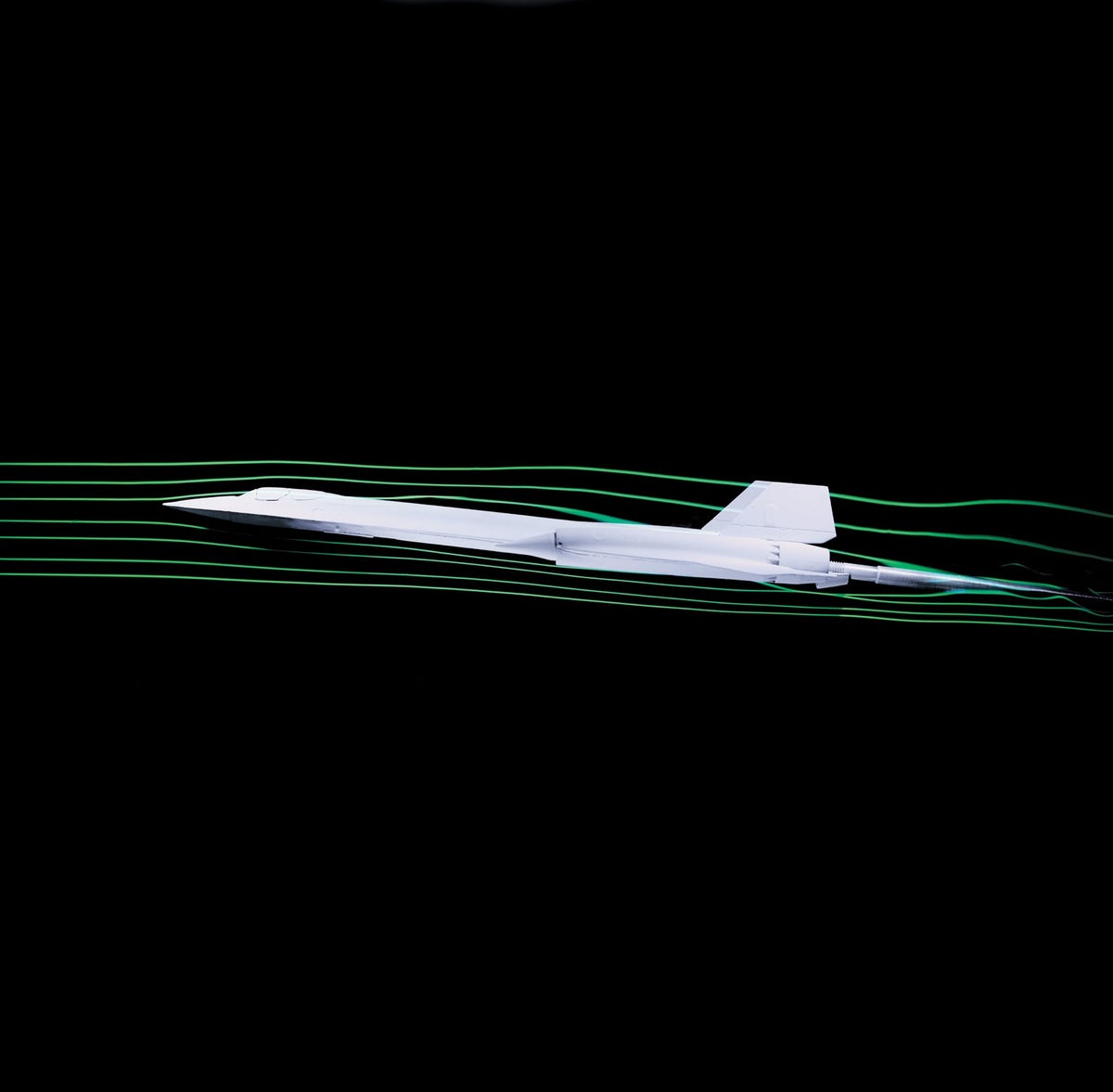"leading aerodynamicist Doug McLean has attempted to go beyond sheer mathematical formalism and come to grips with the physical cause-and-effect relations that account for lift in all of its real-life manifestations. … McLean’s complex explanation of lift starts with the basic assumption of all ordinary aerodynamics: the air around a wing acts as “a continuous material that deforms to follow the contours of the airfoil.” That deformation exists in the form of a deep swath of fluid flow both above and below the wing. “The airfoil affects the pressure over a wide area in what is called a pressure field,” McLean writes. “When lift is produced, a diffuse cloud of low pressure always forms above the airfoil, and a diffuse cloud of high pressure usually forms below. Where these clouds touch the airfoil they constitute the pressure difference that exerts lift on the airfoil.”
The wing pushes the air down, resulting in a downward turn of the airflow. The air above the wing is sped up in accordance with Bernoulli’s principle. In addition, there is an area of high pressure below the wing and a region of low pressure above. This means that there are four necessary components in McLean’s explanation of lift: a downward turning of the airflow, an increase in the airflow’s speed, an area of low pressure and an area of high pressure.
But it is the interrelation among these four elements that is the most novel and distinctive aspect of McLean’s account. “They support each other in a reciprocal cause-and-effect relationship, and none would exist without the others,” he writes. “The pressure differences exert the lift force on the airfoil, while the downward turning of the flow and the changes in flow speed sustain the pressure differences.” It is this interrelation that constitutes a fifth element of McLean’s explanation: the reciprocity among the other four. It is as if those four components collectively bring themselves into existence, and sustain themselves, by simultaneous acts of mutual creation and causation."



To be clear I have no idea either way.
Is this one of those “we know what the principle is (aerodynamic lift) and how to make it work but we don’t know why it works the way it does?”
edit. ask question. receive downvotes. Hello reddit 2.0.
No, we know why. There are just certain peculiarities that cannot be explained by the existing theories.
Maybe I’m misunderstanding some nuance here but it sounds like you’re saying exactly what the person you replied to said.
The article is much less about the principle, because even it says it is scientifically true. The focus of the article is “we can’t, like, explain it, man!” It’s a really long “how do magnets work” piece.
Lemmy specializes in dogpiling.